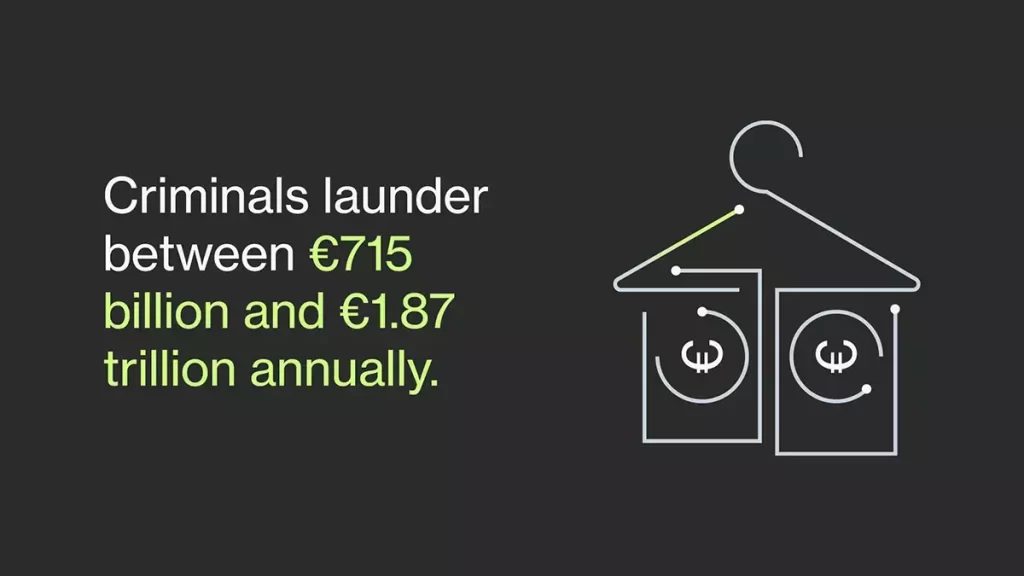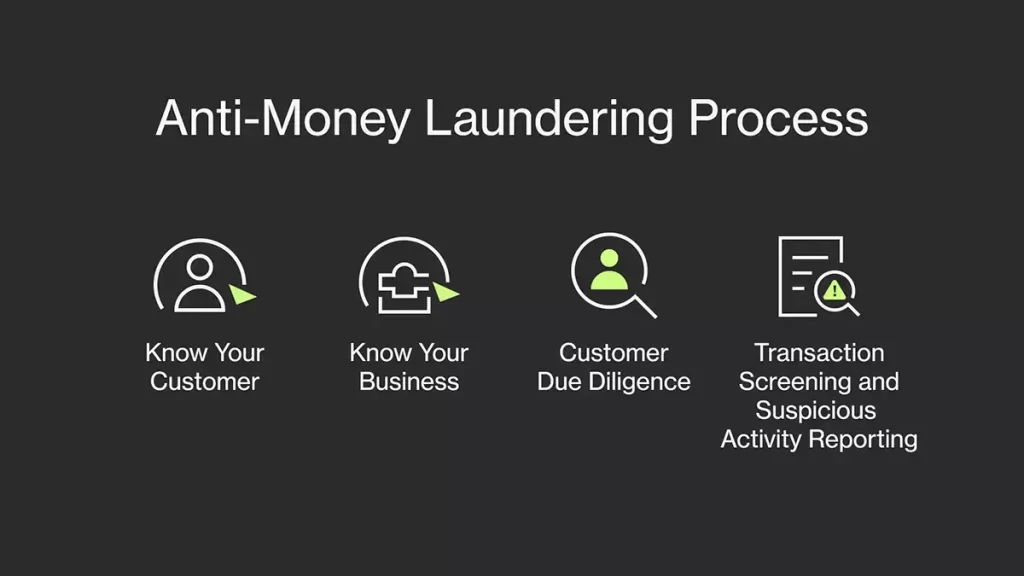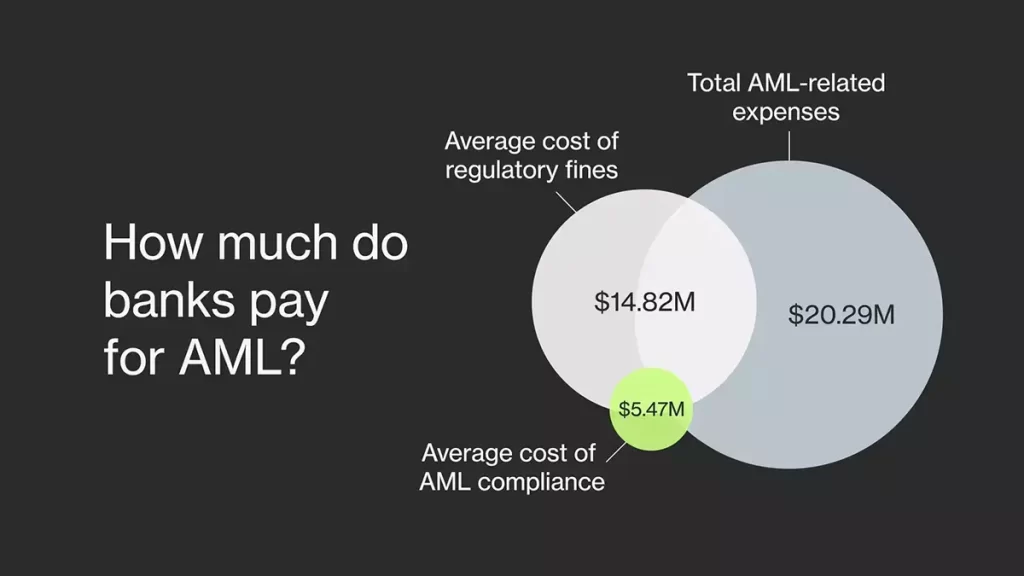Money laundering is not a new practice. For a long time, criminals – especially organized crime groups – have used money laundering schemes to conceal the true source of their illicit funds. With the rise of various financial solutions such as cryptocurrency, neo-banks, and e-wallets, combating money laundering is not an easy feat. As a result, regulators introduced new anti-money laundering regulations in order to prevent money laundering, increasing pressure on regulated industries. According to the United Nations Office on Drugs and Crime, criminals launder between €715 billion and €1.87 trillion annually. In any case, Anti-Money Laundering (AML) regulations are essential to honest business practices.

What Is Anti-Money Laundering?
Anti-money laundering is a set of laws and regulations imposed on financial institutions and other regulated organizations to prevent financial crimes such as money laundering, tax evasion, terrorist financing, and attempts to hide illicit funds. AML compliance places the responsibility to deter, detect, and report suspicious transactions or financial crimes on the shoulders of organizations operating at the core of the issue.
Thanks to several AML-focused organizations, such as the Financial Action Task Force and the International Monetary Fund, the number of actual criminals using the banking system to launder dirty money is limited. Still, AML compliance impacts a financial institution’s relationship with every one of its clients. As a result, new clients are screened immediately upon onboarding, but old clients are also closely monitored for any signs of suspicious activity or terrorist financing.
What Is The Anti-Money Laundering Process?

In order to effectively prevent money laundering in the financial sector, AML is a complicated procedure that consists of several essential components. All of them work together to determine the level of risk involved or identify suspicious behaviour.
Regulations require industries to familiarize themselves with these procedures and to incorporate them stringently into their day-to-day operations.
Know Your Customer
Know Your Customer (KYC) is a process that verifies the identity of a customer. Regulated entities, such as financial institutions, are required to perform KYC at the start of a client relationship, such as when they want to open a bank account. It is the first step in establishing an effective AML compliance program and preventing money laundering activities.
The KYC procedure works by collecting identifying information from a customer and determining whether or not that information is legitimate. It can be performed in two main ways: digitally or in person.
Digital KYC can be powered by an effective compliance platform to aid the process. Systems like Ondato onboard clients in under 90 seconds during a KYC process that requires a client to take a selfie and provide a photo of their identification document. The system also conducts registry checks to validate a customer’s identity.
Meanwhile, many financial institutions still use in-person verification or allow clients to fill out applications digitally but perform all registry checks manually. This approach dramatically lengthens the onboarding process, negatively affecting the customer experience.
Know Your Business
Similar to KYC, Know Your Business (KYB) is also a verification standard. It is, however, responsible for collecting and verifying information about businesses rather than individuals. It can be performed by any company that wants to protect its reputation and interests by determining the legal status of its customer entities and business partners.
KYB was introduced to AML regulations in 2017, much later than KYC. Nevertheless, it is equally important to detect money laundering and terrorist financing by fraudulent businesses.
The procedure can be performed physically and digitally by using photo and video-based identity verification technologies. A business representative is asked to present the identity documents for verification during the process.
It’s worth noting that the KYB process requires more data than KYC. While regulations vary by country, as a general rule, the KYB procedure should include determining the ultimate beneficial owner – a person or group of people who directly benefit from the business profits.
Additionally, a complete KYB check may include information about:
- Basic registration
- Share Capital
- Official and calculated beneficiaries
- Shareholding and shareholders
- Directorship and managers
- Activity field
- Amount of employees
- Export and import
- Real estate
- Movable assets
- Subsidiaries
- Pledges
- Litigations
- Debts to third parties
- Tax debts
Customer Due Diligence
When the identities of customers or business clients are verified, regulations require organizations to perform Customer Due Diligence (CDD). During this procedure, an organization investigates its client’s background to determine the level of risk they may pose.
Customer due diligence is a continuous process. In other words, it does not end when a customer is onboarded and continues throughout the client’s lifecycle.
To ensure an effective due diligence process, an organization should take the following steps:
- PEP screening. A customer’s name is checked against registries of politically exposed persons. Politicians are widely acknowledged to be more vulnerable to corruption and bribery. As a result, they pose a greater AML risk.
- Sanctions screening. Before starting a relationship with a client, an organization should ensure that the person is not sanctioned.
- Adverse media screening. A customer’s reputation can be evaluated by looking for fraud or AML-related media news.
- If the information gathered indicates that a client may pose a higher risk, Enhanced Due Diligence (EDD) should be carried out. It is a type of deep investigation to analyze their fraud risk further.
Transaction Screening and Suspicious Activity Reporting
Banks are required to monitor money transfer and deposit transactions. Financial institutions are also in charge of verifying the origin of large sums of money. Any suspicious activity, such as transactions involving high-risk countries, should be investigated and reported.
AML obliges organizations to preserve thorough records of transactions and any relevant client data obtained since onboarding. These records should be passed on to the financial authorities for money laundering investigation if financial crime activity is spotted. Regulators may issue a hefty fine if a bank fails to collect or provide them with records.
The Cost of Anti-money Laundering Non-compliance

The importance of the anti-money laundering act cannot be overstated. The regulation is critical in preventing and detecting money laundering. Thus, organizations must implement effective AML compliance programs.
To motivate obligated industries, policymakers enforce anti-money laundering regulations through harsh penalties. In 2021 alone, banks and other regulated businesses faced $1.63 billion in fines. A single institution can face a penalty worth millions. For instance, NatWest bank received a staggering £265 million fine last year. However, the data shows that the monetary value of fines is decreasing. Yet, the number of fines issued each year is growing.
It’s evident that regulated entities are struggling to meet all anti-money laundering requirements. A shortage of compliance specialists, costly and slow manual processes, and constant regulatory change all contribute to AML’s failings. It has been estimated that banks currently spend $5.47 million on compliance, compared to an average of $14.82 million for regulatory fines. By improving compliance strategy and automating processes, institutions could cut costs on both compliance and non-compliance.
How We Help Businesses Meet AML Compliance Regulations
Innovative regulatory technology, such as Ondato OS, can boost the success of your anti-money laundering strategy. It can automate tedious processes, compensate for staff shortages, and save a significant portion of the regulatory budget. Ondato OS is designed keeping in mind all of the challenges that compliance professionals face. Thus, it’s a single solution encompassing both client onboarding and ongoing data monitoring.
Ondato’s identity verification and authentication are bulletproof solutions for combating fraud while complying with AML regulations. In comparison with manual processes that take around 18 minutes, Ondato verifies a client’s identity in under 90 seconds, saving both resources and time. Identity verification, like all of our other solutions, can be used as a standalone feature or in conjunction with over 20 other solutions to form a comprehensive KYC and AML strategy.



